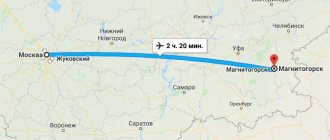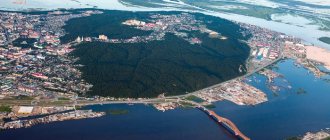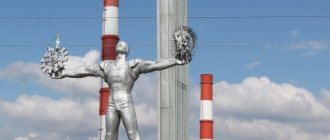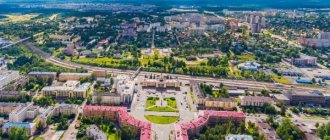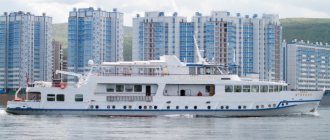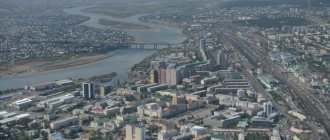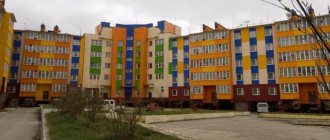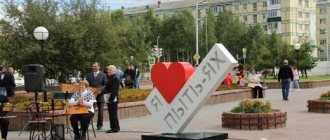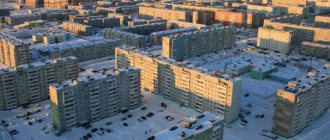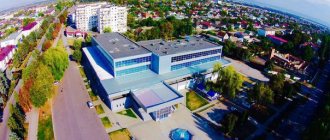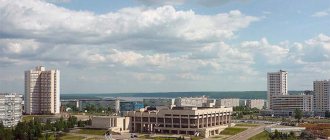Nowadays, people are increasingly flying on vacation to hot countries. Such popular destinations as Turkey, Tunisia, Egypt, Spain, Greece, and Morocco have long been formed. But have you ever thought that we, living in the largest country on our planet, know almost nothing about our cities? Domestic tourism is much less developed than external tourism. This is especially evident when studying Russian reviews of Turkish hotels.
Travelers on domestic routes are increasingly choosing Sochi, Tuapse, Anapa, and Crimea. But other Russian cities also deserve attention. And we encourage you to start exploring our country, because on such a trip there will be a lot of interesting and unforgettable things. Why not plunge into the urban environment, see how other regions of our country live, and compare their standard of living with yours?
So, today we propose to move to the Khanty-Mansiysk Autonomous Okrug, namely, to the city of Nizhnevartovsk.
The importance of the city in the modern world
Nizhnevartovsk is located 860 km downstream of the Ob River relative to Novosibirsk and stands on its right bank. Its history began in 1909 from an ordinary pier, where the ships of Siberian merchants approached in order to replenish their supplies of food and firewood.
After some time, 5 houses were built near the pier - a farm was formed where 11 people lived, and the pier was named “Nizhnevartovskaya”, since Vartovsky Yar was located 180 km upstream.
The settlement gradually grew, but the real boom happened in 1965, when the Samotlor deposit was discovered. From that moment on, the village of Nizhne-Vartovskoye was transferred to the status of a village called Nizhnevartovsky and declared a Komsomol construction site. Young people from all over the USSR came here to develop the Siberian mineral resources.
In the same year the following were built:
- Bathhouse.
- Kindergarten.
- Flour warehouse.
- 20 residential buildings.
- Dormitories.
Over the next 10 years, a television center, an airport and a railway to Surgut appeared in the village. In 1972, Nizhnevartovsk officially received the status of a city that is part of the Khanty-Mansiysk Autonomous Okrug.
Currently, its area is 271.3 square meters. km. You can find it on the map at the coordinates: 60˚ 57'' N. and 76˚ 36'' E. Numerous swamps surround the city to the north and east, and the Ob River flows to the south and west of Russia's oil capital.
Enterprises and work in Nizhnevartovsk
The main activity of Nizhnevartovsk is mining. Next in importance are mechanical engineering, the food industry, the production of building materials and manufacturing.
80% of the total number of enterprises are engaged in oil and gas production. The main companies are:
- a subsidiary of Sibir Energy plc OJSC NK Magma, which is engaged in the extraction, production and sale of oil;
- OJSC TNK-Nizhnevartovsk - oil and gas production (part of TNK-BP);
- The Samotlor field is operated by Samotlorneftegaz OJSC, which is also part of TNK-BP;
- OJSC SiburTyumenGaz, as the former Sibneftegazpererabotka is now called, a gas processing enterprise that is part of the largest petrochemical holding SIBUR;
The food industry is represented by four bakeries, a poultry factory, various meat processing plants, a brewery and a fish processing plant. Sausages from the Nizhnevartovsk meat processing plant are in high demand throughout the Khanty-Mansiysk Autonomous Okrug.
The airport, located 5 kilometers west of the city, is one of the largest in the area and in Russia. Through it, various flights are carried out to many cities and regions of the Russian Federation, as well as charter tourist flights to resorts in Turkey and Thailand.
Nizhnevartovsk Airport
The railway station is located in the north-eastern part of the city along Severnaya Street, and is listed in the Guinness Book of Records as the largest terminal station.
It has its own river port, which carries out various passenger and cargo transportation over different distances. You can take an educational cruise along the Ob River. The city administration plans to build its own river station.
River port
Another industry that has been developing at a very rapid pace lately is the construction business. Construction of various facilities is underway throughout the city. There is a plan for the reconstruction and improvement of the city, which requires additional workers.
Not far from the city in the village of Izluchinsk there is the Nizhnevartovskaya State District Power Plant. The power plant was put into operation in 1993. Currently there are two power units with 800 megawatts of power each. Since 2006, GRES has been a branch of OGK-1 and one of the largest suppliers of electricity in the Ural Federal District.
GRES
There are good repair shops on the territory of the industrial zone, engaged in the overhaul of automobile engines and components, which are brought here from all over the district.
Climate
Nizhnevartovsk is located in the continental climate zone, characterized by very long winters with frosts from -25 to -35 degrees. Snow cover in these places can occur within 200 days. Transitional seasons in Nizhnevartovsk are very short-lived and are characterized by frequent frosts.
Summer in Western Siberia lasts only 10-14 weeks with an average temperature of 22 degrees. In winter, only 1/5 of the annual precipitation falls in Nizhnevartovsk, the main part is concentrated in the summer months.
The average wind speed in these places is 3.1 m/s, relative air humidity is 73.7%. Thanks to its climatic conditions, life in Nizhnevartovsk is equal to the conditions of the Far North.
City infrastructure
The state of housing and communal services is satisfactory. The city is very young, therefore the buildings are still fresh and there have been no serious problems with accidents on pipelines or heating. If we take the status of the entire district, then Nizhnevartovsk is among the leaders in the housing and communal services sector. In winter, the streets are always clean, snow removal equipment works reliably. In the summer, a lot of money is allocated from the city budget for landscaping. Nizhnevartovsk constantly participates in various regional improvement competitions. So in 2011, the city became first in the nominations for the best management company, the best sanitary cleaning, and also took first place in landscaping.
According to the district program to improve the living conditions of the population by 2015, the city must get rid of dilapidated housing, and the authorities promised to relocate residents to new apartments (we hope that this will happen).
The city has an active social service. There is a social adaptation center “Phoenix”, there is a shelter for children and teenagers “Argo”, a social assistance center for children “Kardeya”. A children's district hospital has been opened, which has no analogues in Western Siberia.
The condition of the roads can be assessed as “satisfactory”. Since the city is built on a swamp, the soil is unstable and the road surface is constantly being destroyed. After the winter period, many potholes appear on the road.
The city's congestion with cars is one of the main problems today. The well-being of citizens is at a decent level, and any family can afford a car. Big problems are parking in the yard and traffic jams during rush hour.
Public transport includes various buses and taxis. The city does not need any other type of public transport, because it is very compact (you can cross the city in 15 minutes).
Nizhnevartovsk is one of the largest centers of culture, education and sports. There are 38 secondary schools in the city and there are no problems with getting a decent education. At the same time, there is a catastrophic shortage of preschool institutions. In 2011, approximately 6,000 children were simultaneously queuing for kindergarten. Officials are trying to find a way out of the situation, but it doesn’t help much. Young families have to send their children to private kindergartens, which is expensive for the family budget. The city has a developed network of secondary specialized and higher educational institutions.
Ecology
The city is surrounded by dense forests. The main representatives of the local flora are evergreen trees. The forests surrounding the city are rich in berries and mushrooms. Due to the large number of swamps surrounding Nizhnevartovsk, the oxygen content here is slightly below the statistical average. The soil and water bodies are periodically polluted due to oil leaks and mine breakthroughs.
The city has a large number of cars per capita, which negatively affects air quality. Oil refineries and other factories add carbon dioxide and harmful substances to the air.
According to recent measurements, there is an insufficient amount of chemical compounds of hydrogen sulfide and sulfur dioxide in the atmosphere, but the concentration of nitrogen dioxide and oxide, carbon monoxide and formaldehyde is too high. Many harmful substances settle in the soil and plants.
Population
The injection impulse for the growth of the number of residents of Nizhnevartovsk was the time of its formation as the oil capital of Russia. Over 10 years, starting in 1976, the number of residents increased 3.3 times and amounted to 216 thousand people. Today, Nizhnevartovsk, home to more than 275 thousand people, is among the top hundred of 1,113 cities in Russia in terms of population.
The national composition of Vartovites was also influenced by Komsomol construction projects - young people from all over the Soviet Union came to the city. According to the 2010 census, almost 155 thousand Russians (61.5%), 23 thousand Tatars (9.1%), 14.5 thousand Ukrainians (5.8%), 8 thousand Bashkirs (1, 8%), as well as Belarusians, Azerbaijanis and representatives of small nations of Siberia.
Flora and fauna
The taiga stretches for hundreds of kilometers from the city and surrounded it with its green belt. There are more than 250 species of birds in the taiga forests. Wood grouse, partridges and black grouse coexist peacefully with hazel grouse and geese. Here you can find more than 60 species of animals, 16 of which are predators.
Feel comfortable in the local forests:
- Moose.
- Brown bears.
- Boars.
- Deer.
- Wolverines.
- Minks.
- Hares.
- Beavers.
- Sable.
- Otters.
- Foxes.
- Stoats.
- Martens.
- Squirrels.
More than 800 species of different plants are found in taiga lands. Among the trees, cedar, spruce and larch are the most common, but birch and pine trees are also found. The forest grows in the entire space not occupied by peat bogs and swamps, along which willows, rose hips and rowan grow.
Among the herbs there are floaters and horsetail, and among the shrubs and berries there are lingonberries, princelings, cranberries, currants, cloudberries and blueberries.
Nizhnevartovsk nature, far from the city, has not been subject to anthropogenic influence and has retained its original appearance.
How to get there
Despite the inaccessible area in which the city is located, it is possible to get to Nizhnevartovsk by all available means. The Ob is a wide and navigable river, which allows the use of water transport. But the most popular modes are still airplanes, cars and rail transport.
By plane
On the western outskirts of Nizhnevartovsk there is an airport of the same name, from which there are direct routes to:
- Ufa.
- Peaceful.
- Ekaterinburg.
- Krasnoyarsk
- Talakan.
- Saint Petersburg.
You can fly to Nizhnevartovsk by plane. - Moscow.
- Bugulma.
- Simferopol.
- Tyumen.
- Irkutsk
- Novosibirsk
- Kazan.
- Rostov-on-Don.
- Gelendzhik.
- Krasnodar.
- Osh.
- Chelyabinsk.
By train
In the north-east of the city there is the Nizhnevartovsk-1 railway station, through which there is communication with Moscow, Astrakhan, Tyumen, Volgograd, Ufa, Adler, Penza, Omsk and Orenburg. Communication with the capital of Russia is made through.
The frequency of flights for each city is individual and can vary from 1 to 15 per month.
Don't miss the most popular article in the section: Metro Nizhny Novgorod. Diagram, map, description.
By car
The main administrative road of Western Siberia, the Northern Latitudinal Corridor (69K-18), passes through Nizhnevartovsk. Along it you can get to Surgut from the west, and to Rod from the east. Among the roads of regional importance, there are roads leading to the town of Aleksandrovskoye on the other bank of the Ob, 100 km upstream, as well as to Raduzhny, located 140 km to the north.
Memorial plaque and model of a steam locomotive
Thus, the most famous sights of Nizhnevartovsk are a memorial plaque and a model of a steam locomotive, which were installed in honor of the 30th anniversary of the arrival of the first train. It is worth noting that this infrastructure was built in 1976. The facility is located on the station square.
The uniqueness of this attraction of Nizhnevartovsk lies in the fact that after the discovery of an oil gusher in this area, great importance began to be given to the development of transport, including railway. Without this type of transport, such a rapid development of Samotlor would hardly have been possible. The length of the railway from Tyumen to Surgut was 700 km. Its construction took 9 years, after which the Surgut station was able to receive the first freight train, the carriages of which contained 4,000 tons of cargo.
Main attractions
Although Nizhnevartovsk is a small city, there are enough places to recognize it.
Religious buildings
Nizhnevartovsk is located on the banks of the Ob River, so the river embankment is the calling card of the city. This is a favorite place for walks for young people and families, because it offers a unique view of the endless Siberian expanses. Various monuments and sculptures are installed along the entire embankment.
On the territory of the city since the beginning of the twentieth century. there is an aviation enterprise, therefore, at the entrance to the airport, an alley of honor for aviation technology was created, where models of IL, TU and AN aircraft, as well as MI model helicopters, were exhibited.
In the alley there are memorial plaques with the names of the pilots who gave their lives for the victory over fascism. In the historical part of the city there is a 5-domed Church of the Nativity of Christ.
The temple ensemble includes:
- Bell tower;
- baptismal;
- house parable;
- Sunday School;
- Orthodox secondary school.
At the address st. Lenina, 7 is the city Palace of Arts. Its hallmark are unusually shaped sculptures and musical fountains. It is considered the largest institution of the Khanty-Mansiysk Autonomous Okrug.
There are 2 theaters in Nizhnevartovsk. The city drama theater began its development with a small studio, but by the end of the twentieth century. a troupe was formed that began to stage interesting performances.
Today the theater has a modernly renovated building at the address: st. Sports, 1. On the street. 60 years of October in 18/1 there is a puppet theater “Barabashka”. Directors take a very responsible approach to the repertoire, because children are the most strict and sincere spectator. The theater often travels to other cities, and also participates in competitions and festivals.
Museums
On the street Lenina, 9/1 there is a city museum of local history, which contains more than 30 thousand exhibits telling not only about the history of Russia, but also about the times when no states existed on Earth.
Natural attractions
In 1998, the Siberian Uvaly natural park was created in Nizhnevartovsk.
This place has not been subjected to anthropogenic influence; nature here has been preserved in its virgin form.
Monuments
Nizhnevartovsk is an amazing city. There are monuments dedicated to a street cleaner, a skateboarder, a schoolboy, a dog, a pull-up official, an artist and a violinist. Separately, it should be noted the monument to F.E. Dzerzhinsky.
On Kuropatkina Passage there is a monument “Good Angel of Peace”, installed on top of a high column. The sculpture is made of yellow metal, so the bright play of sunlight reflected from it is visible from afar.
At the top of the Mound of Glory there is a monument to the “Conquerors of Samotlor”, which immortalizes the feat of the Soviet proletarians who began developing Nizhnevartovsk oil. The bronze sculpture raises a hand with a torch and is directed towards Lake Samotlor.
Since 2002, the Memorial of Glory of Nizhnevartovsk Sports was installed in Nizhnevartovsk. The statue is made in the form of a huge golden ball, on which are engraved the names of local athletes who achieved victories in various competitions taking place in Russia.
Districts and real estate of Nizhnevartovsk
Nizhnevartovsk map
The city is young and very compact - there is no zoning as such. The city is divided into various microdistricts and an industrial zone. It has its own airport that operates flights within the country, and the railway station is the last station in Western Siberia (then you can only travel by car).
Schematic zoning of Nizhnevartovsk
Around the city there are forests, swamps and lakes. The Ob River flows along the city embankment. Almost in the middle of the city is Lake Komsomolskoye. In the city as a whole, apartment prices are the same. A square meter of housing will cost 50-70 thousand rubles. The difference in the cost of an apartment depends on the condition of the housing. The price for a one-room apartment in a panel house ranges from 1.8 to 2.3 million rubles, in a Khrushchev building 1.5-1.9 million rubles. The price for three-room apartments is from 2.6 to 3.5 million rubles.
Before entering the city from Surgut, we find ourselves at the ring where the monument to the conquerors of Samotlor is located (it is also called the “Alyosha” monument). From the ring, a road runs to the right along the industrial zone of the city, where the bulk of enterprises and organizations are located. These are mainly various transport, repair and industrial companies. This street is called Industrial.
Nizhnevartovsk Lenin Street
On the left side of this street is the city of Nizhnevartovsk with turns to various streets of the city. There is access to the central streets: Mira and Lenin.
Industrialnaya Street ends with a left turn and the beginning of 60 Let Oktyabrya Street, which runs along the river. On this street there are many beautiful houses of recent years of construction, shopping centers, a monument to a fallen soldier and a church.
Nizhnevartovsk 60 years of October
The street has access to a beautiful embankment, which is the pride of the city. Many residents prefer to spend their free time here.
Embankment in Nizhnevartovsk
Sixteen-story residential buildings were mainly built near the embankment. The view from the windows of these apartments is stunning - the river is at your fingertips! The church is also located on the embankment (very well).
Church on the embankment
This street is probably where the most expensive apartments are sold. There are also two hotels on it - “Samotlor” and “Ob”, as well as two shopping malls and “Slavtek”.
Parallel to 60 Let Oktyabrya Street is one of the central arteries of the city - Lenin Street. Along its entire length there is two-way traffic with a dividing strip. There are many shops on the street, there is a shopping mall, and at the intersection with Chapaev Street there is a shopping mall. You can also find the central market and the Neftyanik sports complex. There are places for tourists to take a walk.
Nizhnevartovsk Lenin Street. Photo by Andrey (Adrenalin) - https://www.panoramio.com/user/38722
On this street is Neftchinikov Square. Opposite the square you can see the Palace of Arts. The street is very beautiful and the prices are correspondingly higher than average and reach 60 thousand per square meter. Active development of Lenin Street is underway - after all, the city center should be the face of the city.
Nizhnevartovsk Lenin Street
Further, if you move along the parallel, there is Mira Street. As befits a central street, it again has many shops, a shopping mall, and the Sibirsky Balagan market. In addition, the Nizhnevartovsk Technical School and the sports youth center - the Olympia sports and recreation complex - are located on it. The presence of playgrounds, kindergartens and schools in every yard makes these areas convenient for living. You can buy an apartment here without any problems at the average price for the city of 60-65 thousand per sq.m.
Nizhnevartovsk Mira street
Mira Street runs through the entire city and ends at the new 17th microdistrict, located on the outskirts of the city. There are short streets here: Romantikov, Heroev Samotlor and Profsoyuznaya. New residential buildings have been built in the microdistrict, but schools and kindergartens are still in the project, which is quite inconvenient for residents. Children have to be taken to attend schools and kindergartens in other areas of the city, and there are still few minibuses going here.
Nizhnevartovsk 17 microdistrict
The courtyards in this microdistrict are equipped with playgrounds and underground parking for residents' cars.
From Mira Street, right in the center, goes Komsomolskoe Lake Street, which, as the name suggests, ends at the most beautiful place in the city center - Komsomolskoe Lake. The perimeter of this lake is 2.3 kilometers. There is a special place for swimming (city beach), although due to the local climate it is rare to swim here. But you can always just have a nice rest with your family; folk festivities are often held in the city near this lake.
Since 2010, an amount of 300 million rubles has been allocated from the federal budget to clean the lake of dirt and debris, as well as to improve the shoreline. And for people who like to litter, there are strict fines.
The photo shows how a dredger is working in the middle of the lake to clean the bottom of the lake from debris and silt.
In this area overlooking the lake, apartments are in steady demand, since the location in the center is environmentally friendly and very beautiful. In addition, during folk festivals you can watch the holiday right from the window of your apartment. Prices per square meter are about 65 thousand rubles.
The next street beyond the lake is called International. This street is already considered the outskirts of the city. One end of the street faces the ring of the conquerors of Samotlor (Alyosha) and further onto the city of Surgut, and on the other side the street faces the Nizhnevartovsk-Izluchinsk road. The residential buildings here are from older buildings. The street is particularly no different and the relationship to the outskirts of the city makes apartments in this area relatively cheaper than central city ones: in the range of 50-60 thousand rubles per square meter of housing.
This is the beginning of the street from the side of the ring and the monument to “Alyosha”, on the left is the small microdistrict MZhK. With a red roof is the building of a medical college, and next to it is a library
The city still has old city buildings (timbers) and beams, but according to the district program “Improving Housing Conditions,” these buildings must be demolished throughout the city, and residents must be provided with housing in new buildings.
The most elite places, of course, are near the city embankment. From 60 Let Oktober Street towards the embankment, new streets of Musa Jalil, Pikman and Kuropatkin Avenue were built.
This is a view of the coastal area and a residential building in the area of the street. Pickman. These streets have the most expensive apartments, prices sometimes reach 70 thousand rubles per square meter, and maybe more
Shopping
Nizhnevartovsk is a small city, so you won’t be able to go shopping in style here. All the few shopping points are summarized in the table below.
| Name | Status | Address | Working hours |
| Bullseye | Shop | St. International, 57 | Around the clock |
| Sunflower | shopping center | St. International, 73 | Daily, 10-21 |
| Sunflower | Shop | St. Lenina, 10 | Daily, 9-18 |
| Central Market | Shop | St. Lenina, 14 | Daily, 8-20 |
| Canyon | shopping center | St. Lenina, 44 | Daily, 10-21 |
| Ugra | shopping center | St. Lenina, 15p | Daily, 10-21 |
Leisure
Nizhnevartovsk is located in a beautiful place, which is shrouded in forests, surrounded by a river and covered with a taiga blanket. To spend an active and fun weekend, you just need to go into the forest, which is located very close to the city limits. The nearby forests have long been trodden by townspeople, so it’s impossible to get lost here.
You can travel not only on foot, but also by bicycle or on horseback. But for those who are accustomed to spending their holidays in more comfortable conditions, there are several establishments in the city that can satisfy such requirements. For example, at the address st. Kuzovkina, 39 there is a diving club “Underwater World”, where you can take an underwater walk with a friendly company.
On the Izluchinsk-Nizhnevartovsk highway at the 3rd km or on the street. Mira, 6 there are paintball clubs, in which sometimes battles of such titanic intensity begin that they are remembered for a long time between their participants.
On the street Neftyanikov, 64A and st. Industrial 81, p. 7 there are 2 shooting ranges where you can test your skills in handling pneumatic weapons.
The Yugra shopping center has its own karting center, and on the street. Aviatorov, 2 and st. Mira, 78 there are two flying clubs where you can get acquainted with the basics of aerodynamics. In addition, there are a huge number of quest rooms in the city, where you will have to think a lot in order to solve complex but interesting problems proposed by the storyline.
Crime
According to statistics, where the well-being of citizens increases, crime also increases. Nizhnevartovsk is no exception. Of course, it does not top the list in the country in terms of crime, but there is still plenty of crime.
In the first place are burglaries, robberies and fraud (after all, many people go to the north not only to earn honestly, but also for “easy” rubles). Recently, two citizens of Nizhnevartovsk were convicted, accused of creating a financial pyramid. From 2007 to 2009, they fraudulently committed thefts from citizens of the district. The victims of the crime were 260 people, and the amount of theft amounted to more than 46 million rubles. They were sentenced to 5 and 7 years respectively.
Grave and especially grave crimes make up a quarter of all crimes (in the first quarter of 2012 there were 140 of them, which is slightly more than last year). The city has not gone far from the country in terms of crimes committed while intoxicated. The Ministry of Internal Affairs of Nizhnevartovsk gives a special role to the fight against drug trafficking.
If we give a general assessment of the criminal component, then Nizhnevartovsk is a small and relatively calm city.
Interesting places to relax with children
Children have incredible energy, mobility and enthusiasm. Therefore, similar to adult paintball, there is also a non-painful version of the game of war. There is a laser tag club in Nizhnevartovsk, where the action of paint balls is performed by laser beams.
There are various children's entertainment centers in the city, which are reflected in the table below:
| Name | Address |
| Rio | St. Lenina, 15p, 4th floor |
| Jump | St. Lenina, 10Ps4, 1st floor |
| Paradigm | St. Severnaya, 5p, 3rd floor St. Lopareva, 4/2 |
| Malibu | St. Kuzovatkina, 1, Art. 6 |
| Happy Land | St. Chapaeva, 27, 4th floor. |
| KwikiPark | St. Lenina, 15p, 4th floor |
| Deyfi | St. Lenina, 15p, 3rd floor |
| Game center | St. Lenina, 10p, st. 3, 2nd floor |
Excursions
Nizhnevartovsk cannot be called a city created for excursions, but Siberian local historians have created routes telling about the history of the city.
Sightseeing tour
The excursion gives you the opportunity to get to know the city by visiting its most famous places by bus. Within 3 hours, the group, accompanied by a guide, will visit the “Flag on the Ob River Embankment”, the Alley of Honor, Victory Park and the most famous monuments of the city. The finale of the excursion will be a visit to the Museum of the History of Russian Life. The cost of the excursion is 800 rubles. for a group of up to 15 people.
New Year's excursion
Not every time you can celebrate the New Year in the Khanty camp. Excursion tour for a group of up to 18 people for 4,200 rubles. for each will allow you not only to visit the ethnographic museum, but also to get to the camp of the indigenous inhabitants of the Far North, meet the real Santa Claus (Yakhli-Iki), have lunch in a winter hut and even ride in a reindeer sleigh!
But to do this you will have to overcome a 10 km long trail, pass by Lake Possen Lor and not get lost in the taiga. This excursion is tough only for real tourists!
Museum of Local Lore
It is simply impossible to visit the Nizhnevartovsk Museum of Local Lore and not go on an excursion, because it has a large number of different programs.
For example:
- “History of the village of Nizhnevartovsk and the everyday culture of the old-timer population of the region.”
- “Nizhnevartovsk: yesterday and today.
- "By the bank of the great river."
- "From village to city."
The cost of guide services is low and for groups of up to 20 people. it can vary from 850 to 1650 rubles. for the excursion.
Interesting Facts
Let's list a few interesting facts:
- In the summer there are white nights, when it hardly gets dark, and it starts to get light at one in the morning.
- In Ugra, Nizhnevartovsk district is considered the largest.
- White Nights are celebrated with the famous Samotlor Nights festival, where many famous singers and dancers perform, competitions and music concerts are held, and people are treated to various dishes. The city turns into a collection of sites that all Vartov residents have time to visit in 3 days.
- Residents of the central part of Russia are probably not familiar with the word “activation”. In Nizhnevartovsk, this indicates the minimum degree value at which it is not recommended to leave the house. This means that pupils may not officially go to school, and students may not attend university. Severe cold is also a good reason to avoid commuting. Cars and public transport cannot start, making it extremely difficult to get to your destination.
- The railway station in the city was built in 2002. It is recognized as one of the largest in Russia. This is the final station, trains do not go further, but the line continues another 20 km to the village. Izluchinsk.
- Due to climatic conditions, local residents retire earlier and receive salary increases.
- This year, constant above-zero temperatures were established only in mid-June. And this is one of the characteristic features of Siberian cities. There are very long winters and transitional seasons. People can wear winter clothes from late September to May.
Nizhnevartovsk is a good city with a developed infrastructure, but it is comfortable to live in it only in the summer. If you are chasing a big salary and want to retire a little earlier, then this is the city for you. But whether it’s worth doing this, if there are many cities in Russia where the climatic conditions are objectively better, is up to you to decide.
Hotels
The hotel business in Nizhnevartovsk is at a completely sane level. The city has more than 10 comfortable hotels that meet the requirements of the 21st century.
For example, not far from the Nizhnevartovsk-1 railway station at 39 Severnaya St. there is the Nadezhda Hotel. The hotel has dry cleaning, animators, a swimming pool, a restaurant, parking and separate rooms for smokers. The cost of one room is from 5130 rubles/day.
An identical option could be accommodation at the Venice Hotel, located in the north of the city at st. International, 39. The hotel has 57 rooms of various categories and all levels of comfort. Room prices range from 340 rubles/day. up to 4800 rub./day.
On the street 60 let Oktyabrya, 2G, right on the banks of the river of the same name, the Ob hotel is located. In addition to the standard room configuration, it has a beauty salon, massage, transfer, and pets are also allowed. The cost of living in the rooms of this hotel varies from 8800 rubles/day. up to 10,600 rub./day.
A more economical option for vacationers would be the “Mini-hotel” located on the street. Chapaeva, 3. The hotel offers only 2 types of rooms for 2500 rubles/day. and 3600 rub./day. The hotel has shared toilets, laundry facilities, a refrigerator and non-smoking rooms.
The kitchen is shared among guests, as are other amenities. You will also have to take care of food yourself, but the Ob River embankment is less than 100 meters away. The hotel is located in the center and many minibuses pass by it.
Nizhnevartovsk
origin of name
Local historians know 3 legends about the origin of the city’s name. The first of them says that a bend in the river was called a varta. The city is located on a bend in the Ob River. A toponym with the root “var” cannot be of Slavic origin. In the Khanty language there are words with such a root. Perhaps the name of the city is also of Khanty origin. However, the word “varta” can be considered in its entirety without highlighting the root “var”. In this case, the toponym may be of West Slavic origin. In Poland, for example, there is the Warta River, the name of which can be translated as “border guard” or “guard”.
The second version, which raises great doubts among historians and local historians, claims that the word “varta” means a gate. A reasonable question arises: where are the gates? Only Tyumen has always been called the Gate of Siberia.
A popular version is that in the old days boats were repaired on the banks of local rivers and lakes. For repair work, tar was needed, which was cooked here. The name of the city, according to this version, could come from the word “cook” (tar). The version has no scientific basis.
Background
Nizhnevartovsk is considered a young city. However, not far from the modern city there was an ancient settlement, mentions of which can be found in sources two hundred years ago. The settlement, called Vartovsk, still exists. There are other toponyms whose names include the word “Vartovsk” (for example, Verkhnevartovsk). One of the ancient references to the settlement of Vartovsk can be found in the book “Tobolsk Province”. This book contains a list of settlements located on the territory of the province in 1868–1869. Many of these mostly small villages no longer exist. Some have changed their names and status.
In the old days, these lands belonged to Khan Kuchum, who ruled this territory for many years. The capital of Kuchum's possessions was located in Isker. The Russians appeared here after Ermak conquered these lands, paving the way for his compatriots to Siberia.
Base
The year of foundation of Nizhnevartovsk is considered to be 1909. The village of Vartovsk was located on the left bank (currently the settlement is called Vampugol). A pier was built on the right bank of the Ob River, where steamers stocked up on firewood. The pier belonged to the merchant Ryazanov. The name of the Ryazanka river comes from his surname. The new pier was located in the area of the modern electronic warfare fleet and was named Vampugol (the Russian-speaking population preferred to call it Vampugolsk).
The Vampugol village council existed for many years. The settlements in which the Khanty lived were under his administrative subordination. Vartovsk was the center of the village council. Over time, Vampugolsk disappeared. The name of the village council was preserved even when other settlements were already under its administrative subordination. Vartovsk was renamed Vampugolsk in the late 60s of the twentieth century. This decision brought confusion to the history of the future of Nizhnevartovsk.
Workers' village
In March 1961, the Megion oil field was discovered in the Nizhnevartovsk region. In 1964, the village of Nizhnevartovskoye was transformed into the working settlement of Nizhnevartovsky. A year later, Nizhnevartovsk was declared a Komsomol construction site. Not only young Komsomol members from all over the country came here, but also married couples. In May 1965, Construction and Installation Department No. 5 (SMU-5) was created. The oil workers provided the young families with an unfinished barracks and 6 tents for living. The barracks also housed a dormitory for bachelors and an office. SMU-5 received the task for 1965: to build 20 houses, a warehouse for storing flour, a bathhouse and a kindergarten. In addition, the construction and installation department was obliged to develop the Bagrasskoye field. Almost all work on the field development was carried out manually.
At the end of 1965, a clinic appeared in the village, built on the initiative of the head of the Megionneft NPU B. I. Osipov. In March 1967, the Nizhnevartovsk television center was built. In the same 1967, a decree was issued on the development of the Samotlor field. Construction of the city began at the same time. Omsk, Moscow and Perm construction teams were sent to build Nizhnevartovsk. In the early 70s, an airport was opened near the village.
City of Nizhnevartovsk
On March 9, 1972, the workers' village was transformed into the city of Nizhnevartovsk. In October 1972, air traffic was opened between the young city and the capital. From 1975 to 1976, construction of a railway line connecting Nizhnevartovsk with Surgut took place. Since 1975, the city has hosted the annual Samotlor Nights festival. Since 1985, a tradition has emerged to celebrate the Tatar holiday Sabantuy. In 1980, regular railway service was opened between Sverdlovsk and Nizhnevartovsk. Construction of the new station building lasted more than twenty years and was completed only in the early 2000s.
In the late 70s and early 80s, a gradual depletion of oil reservoirs in Bashkortostan and Tatarstan began. In this regard, the center of the oil production industry was moved to Western Siberia. In those years, a huge number of oil specialists and their families moved to Nizhnevartovsk. Most of the settlers were Tatars and Bashkirs. At the end of the 70s, a third of all oil produced in the country was of Samotlor origin. The largest amount of oil at the Samotlor field was produced in 1980: more than 158 tons. Then the deposit began to deplete, and the production of “black gold” gradually began to decline. In 1985, M. S. Gorbachev visited Nizhnevartovsk.
In the late 80s and early 90s, a spiritual revival began in the country. Destroyed churches and monasteries began to be restored everywhere and new shrines were built. In 1989, an Orthodox community was officially opened in Nizhnevartovsk. In the early 90s, Muslims also organized their own community. In 1993, construction of the Church of the Nativity of Christ began. The temple was consecrated and opened to parishioners in July 1999. In the mid-90s, Nizhnevartovsk had its own drama theater.
Modern Nizhnevartovsk
Currently, the young city continues to grow and develop. Every year new residential buildings and social facilities appear in Nizhnevartovsk. In 2002, a rehabilitation center for children with disabilities was built. And a canteen and a new building were added to vocational school No. 41. 2003 was the year of the opening of the production of fiberglass pipes, a children's dental clinic and the Lukomorye children's shopping complex.
In 2004, a hockey court with spectator stands for 400 seats was opened. A prosthetic and orthopedic plant appeared in the city. In the same year, a mini-market and shopping complex “Gorodok” were opened in Nizhnevartovsk. In 2005, several new social facilities appeared in the city. Among them is the children's district hospital. The hospital can accommodate 400 children at a time. The hospital is intended not only to serve the residents of Nizhnevartovsk itself, but also children of other cities of the Autonomous Okrug. The medical staff of this medical institution has acquired experience in performing complex operations, which allows them to help young patients even in the most difficult cases. In addition, in 2005, the Olympia sports and recreation complex was put into operation in Nizhnevartovsk, which housed a children's and youth sports school. The Lancord shopping complex and the Nizhnevartovsk regional branch of the Bureau of Forensic Medicine for the Khanty-Mansi Autonomous Okrug were opened. In 2005, the administrative building of the State Fire Service Department No. 5 was built. More than three thousand residents of Nizhnevartovsk were awarded the honorary title “Old Resident of the City.”
In 2006, students of the branch of South Ural State University had the opportunity to study in a new building. A dormitory for students was built at the Nizhnevartovsk State Humanitarian University. A leisure, trade and exhibition complex "Mir" and a celebration house "Stor" were opened in the city. Reconstruction work was carried out at the local maternity hospital. Several new residential buildings were built. The tennis court at the municipal educational institution of additional education for children “Specialized children and youth school of the Olympic reserve for team sports” was named after L. N. Golovanov.
In September 2007, a roller park opened in the city. Boxers from Nizhnevartovsk became silver medalists in Europe. Already at the beginning of the year, local athletes won about five hundred medals of various denominations for their hometown. A new monument 48 meters high has appeared on the Ob embankment. Until 2007, infill development prevailed in Nizhnevartovsk, that is, new buildings were built inside residential areas. In 2007, development became comprehensive and construction of new neighborhoods began. Nizhnevartovsk was recognized as the most comfortable city in Ugra.
In 2008, the reconstruction of the central library building, located on Druzhby Narodov Street, was completed. More than two thousand families were able to celebrate housewarming. The Cosmos shopping and entertainment complex was opened, which houses 2 cinema halls. Nizhnevartovsk teachers and schoolchildren were able to make a name for themselves by receiving about a hundred grants from the President of the Russian Federation, the head of the city and the governor. This was the best indicator in the district. A significant event took place in the city - the All-Russian Literary Prize named after D. N. Mamin-Sibiryak, which was established by the Ural Writers Association, was awarded. Nizhnevartovsk athletes took part in the Olympic Games in Beijing. After participating in the district competition “The Most Comfortable City of Ugra,” Nizhnevartovsk was awarded a second degree diploma.
In 2009, Nizhnevartovsk was again recognized as one of the most comfortable cities in its region. By 2009, another 104.4 thousand square meters of living space had been built. A new physical education and sports complex has opened. There are about one hundred educational institutions in the city. These include 57 kindergartens, more than thirty schools, 3 additional education institutions, as well as the Education Development Center. There are more than fifty industrial enterprises in Nizhnevartovsk. Most of them are engaged in the production of food products. The year 2009 was marked by special successes in the studies of Nizhnevartovsk schoolchildren. About two hundred graduates of local schools were awarded the medal “For special achievements in learning.” Local athletes were able to win 791 medals at national and international championships during the year. Most of the medals won are gold. Nizhnevartovsk singer Elena Gushchina received 2 gold medals in the “Popular Category” and “Original Genre” categories at the World Championship of Performing Arts, held in Los Angeles.
In 2010, several managers of small and medium-sized businesses in Nizhnevartovsk became laureates of the “Golden Fund of Eurasia” award. The city was included in the top thirty best settlements for doing business in the Russian Federation (according to Forbes magazine). The pilot project “Smart City” has started in Nizhnevartovsk. The essence of the project was the implementation of an automated system for accounting and control of energy resources. A new kindergarten, a children's art school, 2 shopping centers and a new fitness center were put into operation in the city.
In 2011, Nizhnevartovsk is again among the most comfortable cities in Ugra. 4 local housing and communal services enterprises were awarded at the All-Russian competition. In addition, the city was recognized as the best municipal entity of the Khanty-Mansiysk Autonomous Okrug among the settlements that took part in the event dedicated to greening the city. The first stage of cleanup work and shore protection was carried out on Lake Komsomolskoye. A monument dedicated to the participants in the liquidation of man-made and radiation disasters was erected on Internatsionalnaya Street. The monument remains the only one in the area to this day. During the year, more than 107 thousand square meters of housing were put into operation. A new sports complex “Triumph” with 13 gyms has opened in the city. A new kindergarten “Golden Key” was opened, designed for 320 places. Reconstruction work was carried out at the sausage station, as well as at the Nizhnevartovskaya substation. The City Drama Theater becomes the venue for the third international theater festival of small-form performances. Russian, Kyrgyz, Ukrainian and German artists took part in the festival. The forum “Dialogue of National Cultures” was held at the Nizhnevartovsk Center of National Cultures. At the end of the year, the city again took one of the leading places in terms of the number of sporting achievements.
2012 became an anniversary year for Nizhnevartovsk. The city turned 40 years old. The city began construction of a multidisciplinary hospital capable of simultaneously accommodating more than a thousand patients. In 2012, the development of the Eastern Planning District project began. The area will occupy at least 103 hectares. This will increase the city's housing stock by 650 thousand square meters. During the year, a total of 148 thousand square meters of living space were put into operation. In addition to housing, several educational institutions will be built in the area. The new sports and fitness complex “Yubileiny” was also put into operation in 2012. The sports complex is designed not only for professional athletes. Ordinary citizens can train here. 11 teachers and 10 schoolchildren from Nizhnevartovsk secondary schools received high marks from the district and federal levels following a competition within the framework of the national project “Education”. A new sculpture dedicated to the dog, man’s most devoted friend, was installed on Neftchinikov Square.
What to bring as souvenirs
Nizhnevartovsk is located on the land of the Khanty and Mansi peoples, so the national products of indigenous peoples always remain in the spotlight. Jewelry made of fur and birch bark, beaded bracelets and wooden jewelry can be found in any souvenir shop in the city. But it’s best to look for traditional dolls with a straw instead of a face in a store on the street. Roznina, 119.
The national footwear of the Khanty and Mansi are reindeer high boots - these incredibly warm shoes, reminiscent of felt boots, can keep you warm even in the most severe frosts. Music connoisseurs and collectors of musical instruments will definitely not pass by the Hantei tambourine. Among the Khanty themselves, this was a sign of belonging to a certain group, emphasizing its independence.
The city is proud of its factories. Very tasty local beer and a whole line of different types of kvass are produced here. Nizhnevartovsk also produces delicious fish products, which are famous throughout Siberia. As a gift, you can bring smoked musk, which is a very rare fish.
For those who appreciate the “black gold of Siberia,” they will like a souvenir in the form of a test tube with a volume of 10-20 ml, in which a little oil is poured.
Nizhnevartovsk considers as its symbol the monument to the conquerors of Samotlor, which is located on top of the Mound of Glory. This figurine is considered the most important souvenir purchased in memory of a visit to the city, which has earned the fame of the oil capital of Russia.
Author: Mikhail Pushkarev
Article design: Oleg Lozinsky
Population of Nizhnevartovsk
The population of the city at the beginning of 2014 was 266 thousand people, of which 133 thousand work in various organizations. In 50 years the population has increased 100 times! Every year the city's population is replenished with 3.5 thousand newborns. Thus, there is a steady increase in population.
If you believe the reports of the city mayor’s office, then at present the share of the population below working age is 18.7%, and that of working age is 71%, while the average age of the population is 33.7 years (in Russia 38.6 years). So the city can confidently be called a city of young people.
Lake Komsomolskoye
The ratio of men and women is approximately the same, but there are still slightly fewer men (49%). The well-being of the townspeople is at a fairly high level. The average income of a resident is 40 thousand rubles. For example, oil workers may have such a salary, but public sector employees rarely reach 30 thousand rubles. In any case, the city is considered economically attractive.
Today, the city is home to 404 different nationalities and nations. About 2,500 indigenous people live in the Nizhnevartovsk region - these are the Khanty and Mansi, who are engaged in collecting various wild plants (berries), fishing and reindeer herding.
